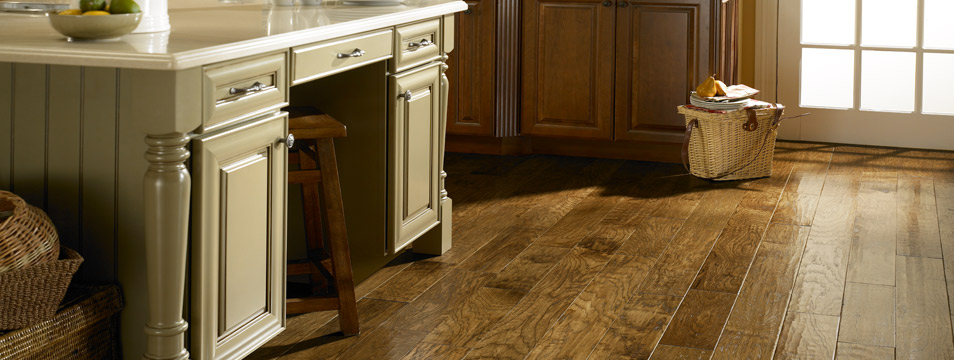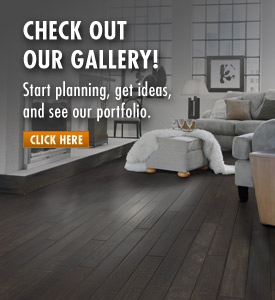1) MATCHING THE CARPET TO YOUR NEEDS
To choose the best carpet for your needs, first arm yourself with the right information.
FACILITY PROFILE: The first step is to clearly define the specific requirements of the facility. Some things to consider include:
* Type of facility and specific area receiving new carpet
* How long the carpet will be used (life cycle)
* Types of dirt that may be tracked into the facility
* Whether the area is a remodeled or a new installation
* Whether access to subfloor is required
* Whether there is modular furniture in the space
LOCATION PROFILE: To maximize performance, you first must also determine where the carpet is going to go.
Below are some location-specific questions to ask:
* On a typical day, will there be spills and stains or dirt tracked
into the building? If so, what type of spills? Food stains? Coffee or
chemical spills?
* What will the frequency of spills be? Excessive? Occasional?
* What about moisture? Do you need a moisture permeable or impermiable
backing?
* Is there exposure to harsh chemicals, intense sunlight or atmospheric
contaminants (such as nitrous oxides or ozone)?
* Will there be lots of foot traffic? Wheelchairs? Supply carts?
THE RIGHT CARPET FOR ANY ENVIRONMENT
Today’s carpet offers you a wide variety of choices in style, fiber composition and color, whether you are specifying broadloom or tile for a corporate office, school and public space or purchasing an area rug for a boutique hotel. New technology can produce multilevel loop and cut-loop patterns, allowing diamond, bow, pin dot, fleur-de-lis or other designs.
Carpet can give personality to a workplace, ranging from formal to bold. In hospitality settings, it can provide directional clues to move people to the registration areas or elevators. In healthcare settings, carpet can be soothing and emotionally healing. It can quiet a computer lab in schools. In retail, carpet can compliment merchandise displays.
For more information, download the CRI Model Specification for
Commercial Carpet [1]. (PDF 1.02 MB)
To match the best carpet to the proper end-use, you should consider:
* Carpet Construction
* Dyeing and Color Selection
* Size Options
* Quality and Performance Requirements
* Insulation
* Sound Absorption
* Cushion
» Back To Top [2]
2) THE SCIENCE OF COLOR ENHANCES CARPET STYLE
UNDERSTANDING DYEING
Dyeing is the process of coloring fiber, yarn or carpet with dyestuff. Coloration in carpet can be achieved at three possible times in the manufacturing process: during fiber development, before the carpet is tufted or before the secondary backing is applied.
The end use of the product will determine the type of dye method. Manufacturers can determine the most appropriate construction, dye method and backing to meet the performance requirements. For example, a specifier may be concerned about fading in a setting with large windows, so the manufacturer would recommend a solution-dyed product with superior colorfastness. If the specifier wants a wide variety of bright colors, the manufacturer might recommend yarn dyeing or space dyeing.
DIFFERENT DYEING METHODS
Pre-dyeing of yarn includes both solution dyeing and yarn dyeing.
* SOLUTION DYED: Synthetic yarn that is extruded and the filaments are
impregnated with pigment. Known for outstanding colorfastness.
* YARN DYED: Yarn is dyed before carpet is manufactured. Yarn dyeing
includes multicolor space dyeing and solid color yarn or skein dyeing.
Post-dyeing of carpet methods include: beck dyeing, printing and continuous dyeing.
* BECK DYEING OR PIECE DYEING: With these methods, carpet is dyed “in
a piece” using a large beck, or vat, of dyestuffs and water. This
takes place after tufting but before other finishing processes.
* PRINTING: Printing involves the application of colored dyestuffs
using screens, rollers or inkjets onto the face of the carpet.
* CONTINUOUS DYEING: Continuous dyeing involves the application of
dyestuffs as the carpet moves in open width under the dye applicator.
The process is called “continuous” because it can be used to dye an
unlimited quantity of 12-foot wide carpets, sewn end to end. (This is
most often used in residential carpet.)
USING COLOR AND PATTERN
Floor coverings are one of the dominant fashion statements for an indoor setting. Colors and patterns in a carpet can create a distinctive atmosphere, serve a practical purpose, or send a message.
Within a facility, bright colors with contrasting highlights can differentiate department or team areas. An accent color on the floor can establish a break between the floor and the wall or stairway, and a printed or tufted pattern carpet can reinforce a corporate identity.
Color selection of carpet is as diverse as the imagination can provide. Quiet colors such as neutral earth colors or the blues of sky and water are chosen for a soothing effect or a corporate look. Warmer colors, reds, maize, and shades of orange are used for creating a mood of energy and vitality. Mid-range colors and multicolor blends are best for hiding soil near entrances. Many carpet manufacturers will also produce custom colors and constructions to meet individual specifications for design coordination.
So you decide what you want your carpet to do and how you want it to fit in with the overall look and feel of your environment. There will surely be many good options from which to choose.
3) CARPET CONSTRUCTION
The look and performance of a particular carpet are determined by its construction, which may be loop, cut or combinations of the two. In corridors, lobbies, offices, classrooms, hotel rooms, patient care facilities and other public areas, loop styles with low dense construction tend to retain their appearance and resiliency and generally provide a better surface for the rolling traffic of wheel chairs or food carts. Cut pile or cut and loop pile carpets are very good choices for administration areas, libraries, individual offices and boardrooms.
Various types of high performance backing systems have additional advantages, including higher tuft binds, added stability, imperviousness to moisture and resistance to edge raveling. Consideration should be given to the functional needs of a particular area.
Understanding carpet construction assists in specifying elements that will provide the best performance in a particular location. Commercial carpet is primarily manufactured by tufting or weaving. Each process will produce quality floor coverings, but tufted carpet accounts for 95
percent of all carpet construction. Both tufting and woven manufacturing are efficient and employ advanced technology to provide capability for a myriad of patterns and floor covering.
TUFTED: Tufting is the process of creating textiles, especially carpet, on specialized multi-needle sewing machines. Several hundred needles stitch hundreds of rows of pile yarn tufts through a backing fabric called the primary backing. The needles push yarn through a primary backing fabric, where a loop holds the yarn in place to form a tuft as the needle is removed. The yarn is caught by loopers and held in place for loop-pile carpet or cut by blades for cut-pile carpet. Next, secondary backings of various types are applied to render a variety of performance properties.
Here are some key steps in the tufting process:
* Yarn comes from cones on creel racks (or from big spools called
beams) into the machine.
* The primary backing feeds into the machine.
* Yarn and primary backing come together in the machine.
* Yarn is fed through needles on a needlebar of a tufting machine.
Needles repeatedly penetrate or tuft into the primary backing.
* The tufted carpet is mended and inspected.
* Carpet is rolled onto large rolls for the next step (dyeing or
backing).
WOVEN: Woven carpet is created on looms by simultaneously interlacing face yarns and backing yarns into a complete product, thereby eliminating the need for a secondary backing. A small amount of
latex-back coating is usually applied for bulk. Principal variations of woven carpet include velvet, Wilton and Axminster.
UNDERSTANDING CARPET FIBERS
To get the best performance and most enjoyment out of your carpet it’s essential to select a carpet fiber that fits your needs. The majority of the carpet produced in the United States contains one of five primary pile fibers: nylon, polyester, polypropylene (olefin), triexta and wool. Synthetic fibers represent the vast majority of the fiber used to manufacture carpet in the U.S. Each fiber type offers somewhat different attributes of durability, abrasion resistance, texture retention, stain and soil resistance, colorfastness, ease of cleaning and color clarity. Manufacturers, retailers, specifiers, and designers are valuable resources in helping you determine the most appropriate fiber and carpet construction for your needs.
FACTS ON BACKINGS
All carpet has some type of backing system or chemistry that helps keep the tufts in place. Backing systems are made from a variety of materials and may also come with various kinds of protective treatments (such as anti-microbial or anti-stain) or beneficial properties (such as anti-static).
The methods and chemicals used depend upon the performance requirements of the backing and the carpet. These decisions will be based upon the specifier’s performance considerations and the manufacturer’s recommendations. Performance considerations are especially important for demanding environments. It’s important that the specifier identify the highest priority needs for how the carpet will perform, whether that is wear and tear, moisture-resistance, or heavy foot traffic. The
manufacturers’ end use recommendations help determine which product will meet the established performance expectations.
Carpet backing systems generally comprise a primary backing and a chemical adhesive. Frequently, a secondary backing is included. In the most common system, the yarn is secured into the primary backing by synthetic latex, and a secondary backing (or cushion) is attached with a bonding agent or adhesive to provide further pile-yarn stability and to add dimensional stability to the carpet structure.


